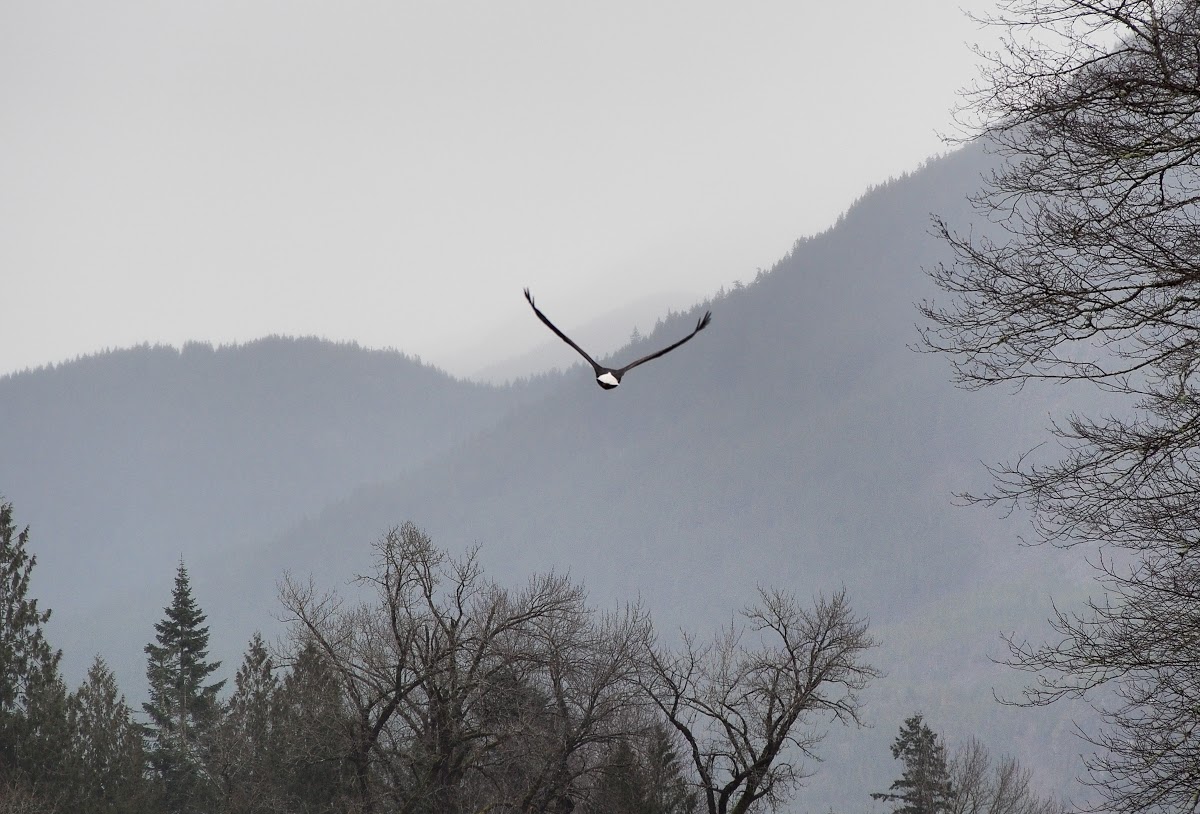Written by Beth Geiger
Washington is home to about 60 pairs of golden eagles (Aquila chrysaetos). Nearly all live east of the Cascades, in shrub-steppe country. It’s easy to see why. Small mammals such as jackrabbits and ground squirrels that live in the shrub-steppe are favorite prey. The wide open landscape offers room for an eagle’s 20 square mile range, along with excellent opportunities to use their legendary eyesight: an eagle can spot a rabbit from three miles away. Better still, the area’s towering basalt cliffs, scoured vertical by ice-age floods, make picture-perfect nesting sites.
Golden eagles are monogamous, and many pairs return to the same nest year after year. They may expand the nest each season with any available materials, even bones. With so much remodeling the nests grow mansion-size, some reaching six feet across with a three foot bowl. Both males and females tend to the eggs. About two months after hatching, the youngsters are ready to soar.
Though these fledgling eagles aren’t currently on the endangered list, they face some daunting challenges. As many as 80 percent may die before they reach adulthood at five years. A 1990s study found that at least 70 percent of those deaths are human-related, such as electrocution, collisions with vehicles or structures, lead poisoning, or illegal shooting. Reduced food is another major threat. As Washington’s shrub steppe is fragmented and developed, populations of prey such as rabbits are nosediving. In fact, golden eagle populations in the area may already be in decline as evidenced by fewer golden eagle pairs occupying historic nesting sites.
The Conservancy’s Moses Coulee/Beezley Hills Preserve is ideal golden eagle habitat; it’s not uncommon to see a gold-tinged eagle hunting and soaring there. At this Preserve we partner with ranchers, scientists, and farmers to restore and preserve 30,000 acres of shrub steppe. That in turn protects the ecosystem that supports the golden eagle, including the prey species this elegant raptor depends on.




















